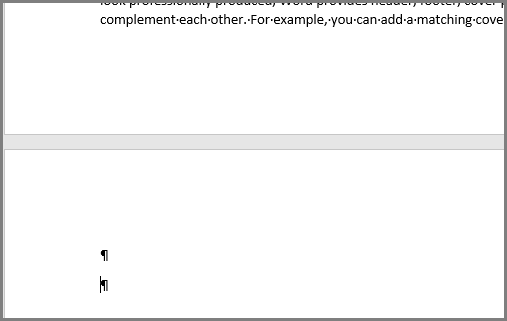

- MAC CONTROLS TO SEARCH PAGE FOR WORD HOW TO
- MAC CONTROLS TO SEARCH PAGE FOR WORD MANUAL
- MAC CONTROLS TO SEARCH PAGE FOR WORD FULL
long names in open and save dialog sheets).
:max_bytes(150000):strip_icc()/ScreenShot2018-07-23at12.09.35-5b55b7c346e0fb00370bb06b.png)
These commands can be really handy if you're selecting text in very small boxes where you can't see much (e.g. For Word 2010/2013 users, right click anywhere in the ribbon, select 'Customize the Ribbon,' in the right hand panel, check 'Developer. If you play around with and internalize these commands I think you'll find that keyboard text selection is often faster than moving your hand to the mouse. Note: Word 2007 users, if your developer tab is not displayed, click the Office Menu>Word Options>Popular and check 'Show Developer tab in the Ribbon. Also, if you use the keyboard shortcuts without the SHIFT key they will move the cursor without selecting text.
MAC CONTROLS TO SEARCH PAGE FOR WORD FULL
Finally, the PAGEUP and PAGEDOWN keys (plus SHIFT) will select a full "page" up or down.īasically the upshot is this: hold down the SHIFT key while in a text field and it will shift to text selection. The HOME key (plus SHIFT) will select all the text to the beginning of the document and the END key (plus SHIFT) will select all the text to the end of the document. The up/down arrow keys (plus SHIFT) will select a full line up or down with the OPTION key held down the up/down arrows will select a paragraph.

The left/right arrow keys (plus SHIFT) will increase the selection one character in that direction, if you hold down the OPTION (?) key the left/right arrows will select an entire word in that direction, and if you hold down the ? key the left/right arrows will select to the beginning or end of the line. To select text you hold down the SHIFT key and then use the arrow keys or HOME, END, PAGEUP, and PAGEDOWN. The keyboard text selection commands on the Mac are basically standard. So I thought the topic would make for a nice beginning of the year Mac 101.
MAC CONTROLS TO SEARCH PAGE FOR WORD MANUAL
Clear all manual kerning, tracking, and word spacing, Cmd-Option-Q.
MAC CONTROLS TO SEARCH PAGE FOR WORD HOW TO
You can set options for a selected source, such as how to display pronunciations or which language of Wikipedia to search.For someone who loves keyboard launchers like Quicksilver, I have to confess an embarrassing deficiency in my keyboard competency: I've never really learned to select text with the keyboard. All the best InDesign CS6 keyboard shortcuts for Mac on a 1-page, downloadable. Delete Back Word Ctrl+Backspace Delete Word Ctrl+Delete Do Field Click Alt+Shift+F9 Doc Close Ctrl+W, Ctrl+F4 Doc Maximize Ctrl+F10 Doc Move Ctrl+F7 Doc Restore Ctrl+F5 Doc Size Ctrl+F8 Doc Split Alt+Ctrl+S Double Underline Ctrl+Shift+D End of Column Alt+Page Down, Alt+Shift+Page Down End of Doc Extend Ctrl+Shift+End End of Document Ctrl+End. See more information: Click a category-such as Siri Knowledge-at the bottom of the Look Up window, or swipe left or right on the trackpad.Ĭhange dictionary sources in the Dictionary app: Click Configure Dictionaries to open the Dictionary preferences window. To learn more about Dictionary, see the Dictionary User Guide.

See the word in the Dictionary app: Click Open in Dictionary. See the full definition: Click the “more” link at the end of the short definition. In the Look Up window, do any of the following: If your trackpad supports force click, you can set the Look Up gesture to use that instead of a tap. Or you can tap the trackpad with three fingers (if the gesture is selected in Trackpad preferences). In an app or on a webpage on your Mac, Control-click a word or phrase (in some apps you may need to select it first), then choose Look Up from the shortcut menu.


 0 kommentar(er)
0 kommentar(er)
